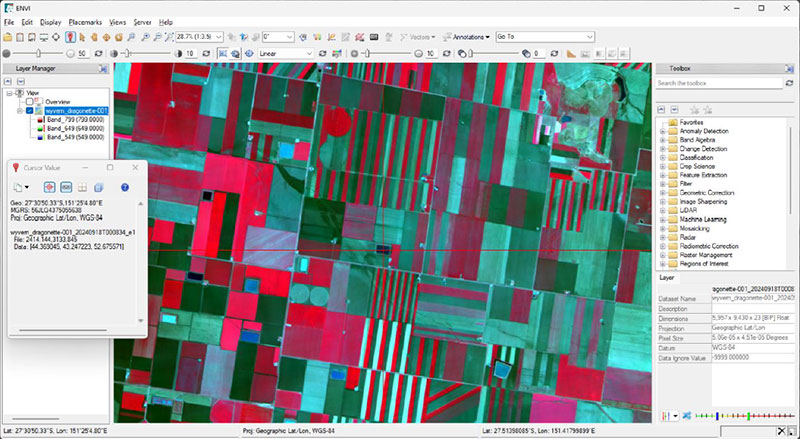This blog was written in collaboration with Adam O’Connor from Wyvern.
As hyperspectral imaging (HSI) continues to grow in importance, access to high-quality satellite data is key to unlocking new insights in environmental monitoring, agriculture, forestry, mining, security, energy infrastructure management, and more. Wyvern’s Open Data Program provides free access to visible and near-infrared (VNIR) hyperspectral data, allowing users to explore and analyze imagery at an impressive 5.3m ground sample distance (GSD).
At NV5, when new remote sensing data sources become available, we make sure to integrate them quickly so our users can take advantage of the latest advancements. That’s why ENVI supports Wyvern’s hyperspectral satellite data, giving users the ability to seamlessly ingest, visualize, and analyze this powerful dataset.
What Makes Wyvern’s Hyperspectral Data Valuable?
Wyvern provides VNIR hyperspectral imagery at 5.3m GSD, which means each pixel represents 5.3 meters on the ground. This resolution is ideal for applications requiring a balance between spatial detail and regional coverage. Wyvern data provides:
-
High enough resolution to distinguish vegetation types, land cover changes, manmade objects, and surface materials while covering large areas efficiently.
-
Detection of vegetation stress, crop health, yield prediction, and forest tree speciation while keeping data sizes manageable for fast processing in ENVI.
-
Ability to perform environmental conservation monitoring and remediation assessments, as well as support humanitarian assistance and disaster response (HADR) efforts, where detecting large-scale patterns is more critical than fine details

Wyvern Dragonette-1 imagery data product loaded into the ENVI software (CIR).